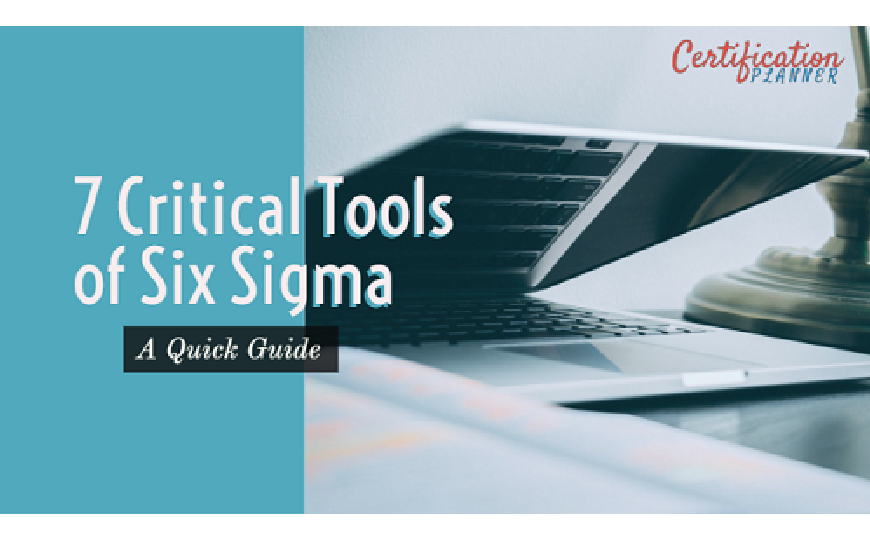7 Critical Tools of Six Sigma
Six Sigma is one of the most important and exploited techniques and tools in the quality assurance spectrum. Developed in the year of 1980, Six Sigma has been a constant tool in the belt for project managers, quality assurance managers, and professionals dealing in these two areas. Six Sigma is centered around process improvement with all its principles, tools and good practices aiming at improving the quality of output by identifying and removing the cause of the defect and minimizing variations in the business process.
What sets Six Sigma apart from other quality management ideologies or principles are:
1. Cleared focus on achieving a quantifiable financial return from each project
2. Extensive emphasize on stronger and more passionate management
3. Commitment to make decisions based on variable data and statistical methods
In this article, we will detail the tools used by experts of Six Sigma. While there are three major types of tools used: Statistical tools, Software tools, and Judgemental tools, we will concentrate on Statistical tools in this article. Statistical tools aid in analyzing the data to extract various derivatives, facts, and observations related to the ongoing project. A few of the most commonly used Statistical tools are:
1. Pareto Chart:
Pareto Chart is a direct derivative of the Pareto principle that specifies that about 80% outcome is the result of 20% of the causes. Applying it to a simple real-life case, you wear 20% of your shoes on 80% of the duration. The Pareto chart is a special bar graph that helps in separating the “critical few” from the “trivial many” so that you can concentrate on the more critical issues. In the above example is based on data collected for defects happening, every time a defect happens. This will help you identify the major issue and concentrate on it.
2. Histogram
A histogram is a tool that can aid in identifying the frequency of an item or identify the existence of a various range of items. This helps you identify where most of the data fall and thus shows the area that requires the maximum attention.
3. Gage R & R
The quality of data takes up prime importance in Six Sigma where the whole methodology revolves around making a quality analysis of data. If the data is not reliable, the analysis will remain inconsequential. An inappropriate measure can lead up to wastage in various forms. Let us say you have a system that identifies the fill weight of various cartons. If the measuring units do not function properly, the generation of waste becomes inevitable. A simple way of identifying such instances, as done in Gage R & R is to look at a variety of measurements again and again by different people. If the measuring unit produces different weights for the same cartons on different instances, then your measuring unit requires collaboration.
4. Attribute Agreement Analysis
Attribute Agreement Analysis is another test to check whether the data can be trusted or not. It involves using a master (known value) against the performance of two appraisers, comparing their results.
5. Process Capability
Process Capability shows how well your process or product meets the specifications. Almost every process or product will have an upper and a lower limit. For example, while using a process, the wait time should not cross a given threshold, the overall process duration needs to be within a specified range as well. Process capability can address such analysis requirements.
6. Control Charts
Control Chart can be utilized in two different ways. They can either be used to monitor process stability or can be used as an analysis tool.
The Control Chart monitors the variations in the key characteristics of a process to identify process defects. Once the upper and lower limit is calculated, any point falling outside this range are process variations caused by irregularities. These irregularities can then be identified and eliminated. Control charts are instrumental in identifying and eliminating future defects.
7. FMEA
Failure Mode and Effect Analysis is one of the first highly structured systematic techniques for failure analysis. FMEA involves reviewing as many components, processes, assemblies and sub-assemblies possible to identify failure modes and their cause and effects. For every component, their failure mode and its effects on the rest of the system is noted in an FMEA worksheet. FMEA makes use of experience to identify potential failure modes and their effects.
It is important to understand that Six Sigma can be beneficial only if the data collected is of prime importance and the analysis done is thorough and accurate.
Certification Planner, LLC can assist you in mastering the various aspects of Lean and Six Sigma. We provide various certifications in LSS: Lean Six Sigma Yellow Belt, Lean Six Sigma Green belt, Lean Six Sigma Black Belt, Dual Lean Six Sigma Yellow, and Green Belt and Dual Lean Six Sigma Green and Black Belt. With our courseware being developed by industry experts, we offer prime quality and a 100% pass guarantee. Interested? You can visit us at www.certificationplanner.com or drop an email at support@certificationplanner.com. You can also speak to our Training experts at +1 4084185586. Happy Learning!


Comments (0)